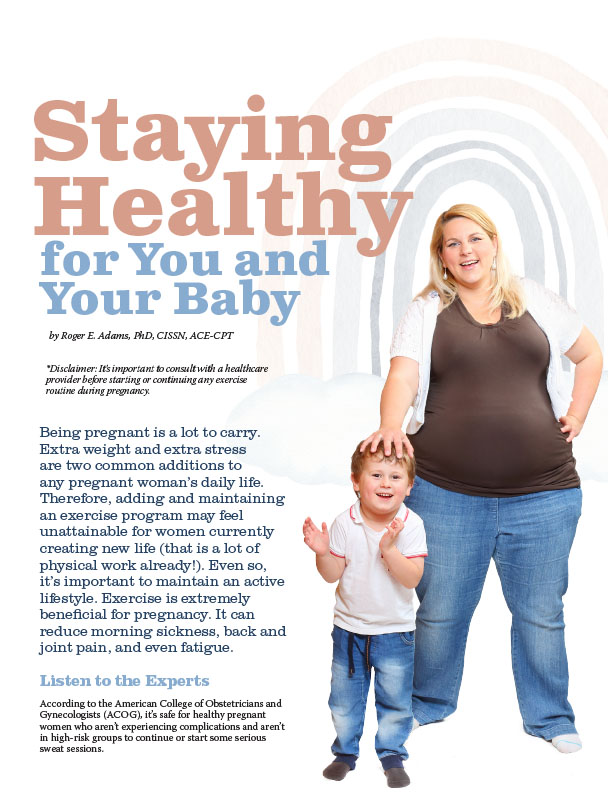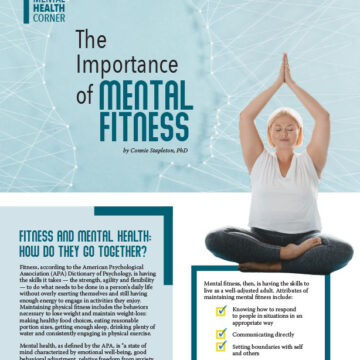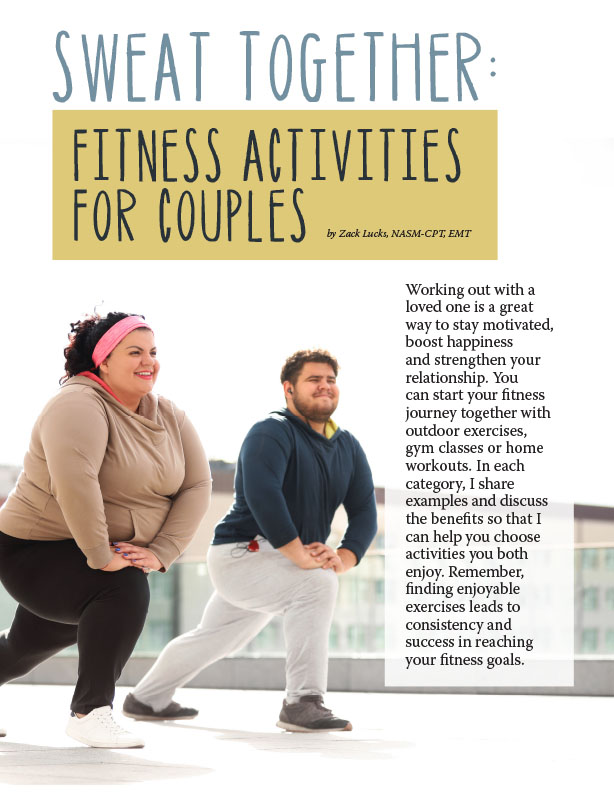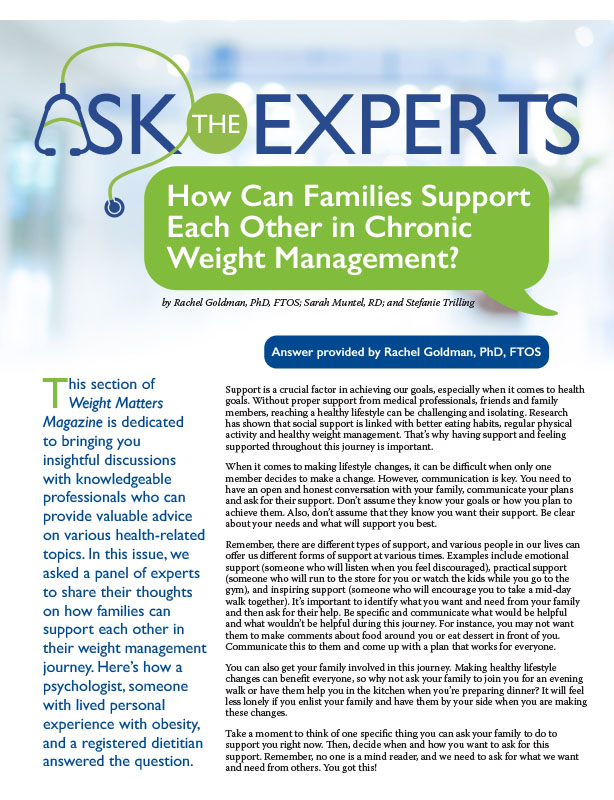Staying Healthy for You and Your Baby


by Roger E. Adams, PhD, CISSN, ACE-CPT
Spring 2023
*Disclaimer: It’s important to consult with a healthcare provider before starting or continuing any exercise routine during pregnancy.
Being pregnant is a lot to carry. Extra weight and extra stress are two common additions to any pregnant woman’s daily life. Therefore, adding and maintaining an exercise program may feel unattainable for women currently creating new life (that is a lot of physical work already!). Even so, it’s important to maintain an active lifestyle. Exercise is extremely beneficial for pregnancy. It can reduce morning sickness, back and joint pain, and even fatigue.
Listen to the Experts
According to the American College of Obstetricians and Gynecologists (ACOG), it’s safe for healthy pregnant women who aren’t experiencing complications and aren’t in high-risk groups to continue or start some serious sweat sessions.
How to Stay Upright and Avoid Injury While Pregnant
If you are or have been pregnant, you’ve probably noticed that your balance and center of gravity shifts while you bake your bundle(s) of joy. Added weight places pressure on the joints and can affect your balance and dexterity, so pregnant women need to take extra care while working out. Unless you did high-impact exercise on a regular basis before becoming pregnant, exercises like running and jumping should be avoided once you reach the middle of your second trimester.
Low-impact Aerobic Exercises
Swimming, prenatal yoga and stationary cycling are all excellent low-impact exercises that can keep you moving with little impact on your body.
Pick Things Up and Put Them Down
In addition to aerobic exercise, building muscle through strength training is the best thing you can do to get fit today and after your baby is born. Strength training while pregnant will not only build muscle and keep added fat gain to a minimum, but it will also help improve your balance and posture. Plus, it will make getting around with extra weight in those later months easier. If you were already lifting weights before your pregnancy, you can probably continue (consult your physician), but avoid exercises that put pressure on your pelvic floor. Once you hit the middle of your second trimester, you should sit up while lifting and avoid exercises where you are lying flat on your back because this may restrict blood flow to the uterus.
Don’t Be Too Hard on Yourself
Physical exertion will be challenging enough without adding self-doubt about how you look or what others think of you while working out. Remember, you’re doing the hardest physical activity in the gym – making a person – and every woman’s body is different. If you can’t make it to the gym, don’t worry; working out at home or going for a walk outside is still beneficial for you and your baby.
How to Know You’re Not Overdoing it
The American College of Obstetricians and Gynecologists (ACOG) recommends pregnant women engage in at least 150 minutes of moderate-intensity aerobic activity or 75 minutes of vigorous-intensity aerobic activity per week. I use the Talk Test Perceived Exertion Scale because bodies are different and at different levels of fitness, and because not everyone has access to a heart rate monitor while active. If possible, I highly recommend getting and using a heart rate monitor and drawing a correlation between the Talk Test Perceived Exertion Scale and your personal beats per minute (bpm).
The Talk Test Perceived Exertion Scale:
Maximum Effort Activity: This level feels impossible to keep going. You are completely out of breath and unable to talk. You cannot maintain this level for more than a few seconds.
Very Hard Activity: It is very hard to maintain exercise intensity at this level. You can barely breath and can speak only a few words.
Vigorous Activity: At this level, you may feel physically uncomfortable and short of breath, but able to speak a complete sentence.
Moderate Activity: You will breathe heavily at this level but can still carry on a short conversation. You may find this level to get progressively more challenging as you continue exercising.
Light Activity: You should feel like you can stay at this level for hours, easily breathing and able to carry a full conversation.
Very Light Activity: Very little exertion will be felt at this level; more than sitting but less than walking.
Even if 150 minutes (2.5 hours) each week sounds like a lot, you can spread it out over the week and even break up your daily goals into smaller chunks of time during the day as your schedule allows. Remind yourself that some exercise is always better than no exercise. Do your best!
Physical activity during pregnancy can include:
- Brisk Walking: Brisk walking is a low-impact exercise great for pregnant women that is easy on the joints and can be done almost anywhere. It’s a great way to improve your cardiovascular fitness and circulation, and it can help alleviate some pregnancy-related aches and pains.
- Swimming: Swimming is a great low-impact exercise during pregnancy. It provides a full-body workout that strengthens your muscles and heart and will help relieve aches and pains in the back and joints. Not a swimmer? Just tread water for a little bit or simply walk around in the pool. The resistance of the water will provide a great workout!
- Cycling: Cycling on a stationary bike is another low-impact exercise that is safe to do during pregnancy. It’s a great way to improve cardiovascular fitness, build and maintain leg muscles, and increase strength in the lower body. As you progress later in your pregnancy, it may be more comfortable to switch to a recumbent-style stationary bicycle.
- Strength Training: Building muscle and maintaining strength while pregnant is essential for having a smooth pregnancy and easier delivery. Strength training will help your body get stronger as you gain extra weight and your balance changes. Working with a certified personal trainer early in your pregnancy can teach you what is safe to do and what you should avoid.
- Prenatal Yoga: Prenatal yoga is a gentle form of exercise that helps improve flexibility, strength and balance. It also helps alleviate stress and tension in the body.
- Pelvic Tilts: Pelvic tilts are a great exercise for strengthening the core and pelvic floor muscles during pregnancy. These muscles can become weak during the later stages of your pregnancy. To perform this exercise, stand with your feet shoulder-width apart and your back against a wall. Slowly tilt your pelvis forward and backward, squeezing your glutes and abdominal muscles as you do so.
I can’t overstress the importance of consulting with your doctor as soon as possible before beginning any exercise program, as certain conditions may require modifications or restrictions. During pregnancy, your body goes through many changes which can affect the way you respond to exercise.
Healthy Diet = Healthy Body
Staying hydrated and eating a healthy and balanced diet is important for you and your baby’s health. Eating whole foods and drinking plenty of water can help keep weight gain at a minimum and ensure you and your baby get all the nutrients you need. Fill your diet with lots of colorful fruits and vegetables, moderate amounts of whole grains for energy, plenty of lean protein and dairy, and healthy fats from olive oil and avocados.
Including exercise in your new pregnancy routine is a great way to keep yourself healthy, give your baby a great start at life, and make a new healthy habit you can continue after you welcome your baby into the world. It’s never too late to start an exercise program, even when pregnant!
About the Author:
Roger E. Adams, PhD, CISSN, ACE-CPT, is the owner of Eatrightfitness, an evidence-based private practice in Oklahoma City that focuses on weight management, sports performance nutrition and wellness coaching. He has more than 23 years of experience working with clients in person and remotely to achieve better health and fitness. Additionally, Dr. Adams speaks at business seminars, health fairs and nonprofit organizations about the ever-changing field of nutrition and fitness. Dr. Adams holds a doctorate in nutrition from Texas Woman’s University and is a certified personal fitness trainer by the American Council on Exercise (ACE). More information about Dr. Adams is available at EatRightFitness.com.
by Yelena Kibasova Spring 2024 The fitness world is evolving, with new trends and innovations that promise…
Read Articleby Zack Lucks, NASM-CPT, EMT Winter 2024 Working out with a loved one is a great way…
Read Articleby Rachel Goldman, PhD, FTOS; Sarah Muntel, RD; and Stefanie Trilling Winter 2024 This section of Weight…
Read Article








